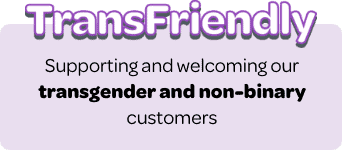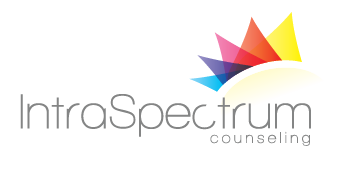
This blog is authored by Kayo Curra, MA, LCPC, NCC, CCMHC, a member of the IntraSpectrum Counseling clinical team.
Religious identity and LGBTQ+ identity can often end up feeling mutually exclusive. For queer and TGNC individuals who were raised in religion and still value their relationship with their faith, coming out can feel like a lose-lose situation. Internalized messages about what a family “should” look like can leave people feeling like being authentic in their sexuality also means having to give up on the idea of getting married or raising children. And it can be hard to shake echoes of “love the sinner, hate the sin.”
The onslaught of legislation using “sincerely held beliefs” and religious dogma to target LGBTQ+ communities continues to make religious spaces feel like uncertain terrain, even in communities that openly claim allyship and express a desire to intentionally hold space for their queer and TGNC community members. In spaces where queer and TGNC individuals are able to find a community that feels authentically accepting, it’s not uncommon to find that there aren’t many, if any, other community members they can connect with across both aspects of their identity.
On the other side of the equation, the understandable hostility that many members of the LGBTQ+ communities have toward religious institutions can often create an atmosphere where queer and TGNC people of faith feel that they cannot be open about their religious identity for fear of ridicule or rejection. Or they might simply feel that sharing that side of themselves comes with too high a risk of causing other LGBTQ+ people to feel unsafe around them.
Why is it that these two foundational aspects of identity, LGBTQ+ identity & religious identity, sometimes feel so at odds? We should never forget that context is key. The unique historical, economic and socio-political contexts that have existed throughout time and cultures have always influenced how religious doctrine is interpreted and performed. And while the structure and role of religion have changed substantially over time, the people who would now be described as LGBTQ+ have always existed.
How then can we explore these issues through a queer and gender-expansive lens? If you feel like you’re in need of some support, consider therapy. Group therapy is a short-term therapeutic approach that allows participants to share their experiences and coping skills with others, and learn effective strategies for developing stronger support networks. Many people also find individual therapy to be helpful in addressing these issues.
Here’s suggestions on additional resources, for information and support:
- Learn about how gender and sexuality have been framed and experienced throughout history, with books like “Sexuality and Gender in the Classical World”, edited by Laura K. McClure
- Read books that offer queered and decolonized perspectives of religious texts and oral traditions, like “Shikhandi: And Other Tales They Don’t Tell You”, by Devdutt Pattanaik
- Explore resources that challenge oppressive religious narratives and interpretations, like The Reformation Project
- Find religious communities that have LGBTQ+ services, like Or Chadash’s LGBTQ+ Shabbat Services (Reform), the 1st Friday of every month
- Fill your social media with affirming content by following pages and accounts like The Queer Muslim Project
____________________________________________________
This blog is authored by Kayo Curra, MA, LCPC, NCC, CCMHC, a member of the IntraSpectrum Counseling clinical team. IntraSpectrum Counseling is Chicago’s leading psychotherapy practice dedicated to the LGBTQ+ community, and we strive to provide the highest quality mental health care for multicultural, kink, polyamorous, and intersectional issues. For anyone needing affirming and validating support, please click here or contact us at help@intraspectrum-chicago.com.





 Today, July 26th, is National Disability Independence Day. This annual commemoration marks the day in 1990 when the Americans with Disabilities Act (ADA) was signed into law. The ADA enshrined several crucial civil rights protections for individuals with disabilities, but it still falls short of its intended goals after over 30 years on the books.
Today, July 26th, is National Disability Independence Day. This annual commemoration marks the day in 1990 when the Americans with Disabilities Act (ADA) was signed into law. The ADA enshrined several crucial civil rights protections for individuals with disabilities, but it still falls short of its intended goals after over 30 years on the books.